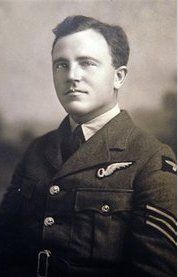
 | Eric Dowling, who helped plan the mass wartime breakout from a German prison camp that inspired the movie "The Great Escape," has died at 92. |
Peter Dowling said his father died at a nursing home near Bristol in southwest England on July 21, a day before his 93rd birthday. The Aabletone Nursing Home on Thursday confirmed the death.
Seventy-six Allied prisoners escaped from the Stalag Luft III prison camp on March 24, 1944, in a daring breakout. All but three were recaptured, and 50 were shot on the orders of Adolf Hitler to deter future attempts.
The escape attempt was one of the most celebrated incidents of the war, recounted in a 1963 film starring Steve McQueen and Richard Attenborough.
Dowling played a key role in planning the escape. He forged documents, made maps and was nicknamed "Digger" for his work helping to excavate the three escape tunnels, code-named Tom, Dick and Harry.
Over almost a year, prisoners surreptitiously dug the tunnels 30 feet (9 meters) underground, shored up with bedboards and wired with stolen electrical wire. Tom was discovered by guards and Dick was abandoned, but the 300-foot (90-meter) long tunnel Harry was eventually completed.
Dowling was not among the more than 200 prisoners chosen by lottery to make the escape attempt on the cold and moonless night. By the time German guards discovered the breakout, 76 men had crawled free.
Many of the film's characters were composites of real people. Peter Dowling said the one that most resembled his father was a flight lieutenant nicknamed "The Forger," played by Donald Pleasance.
But he also said his father was not a fan of the movie.
"He wasn't the greatest admirer of Americans and it didn't go down too easily that one of them should be playing the starring role," Peter Dowling said. "A lot of the reality of digging tunnels was left out too."
He said his father felt the scene in which McQueen attempts to race to freedom on a stolen motorcycle "was well over the top."
Born in southwest England in 1915, Flight Lt. Eric Dowling flew 29 missions as a navigator with the Royal Air Force's Bomber Command. He was shot down in April 1942 and sent to the prison camp for Allied airmen near Sagan in eastern Germany — now Zagan, Poland.
After the war, Dowling served as an RAF air-accident investigator and later worked for British Aerospace on the supersonic Concorde jet.
Dowling's wife, Agnes Marie, died in 1997. He is survived by a son and a daughter.